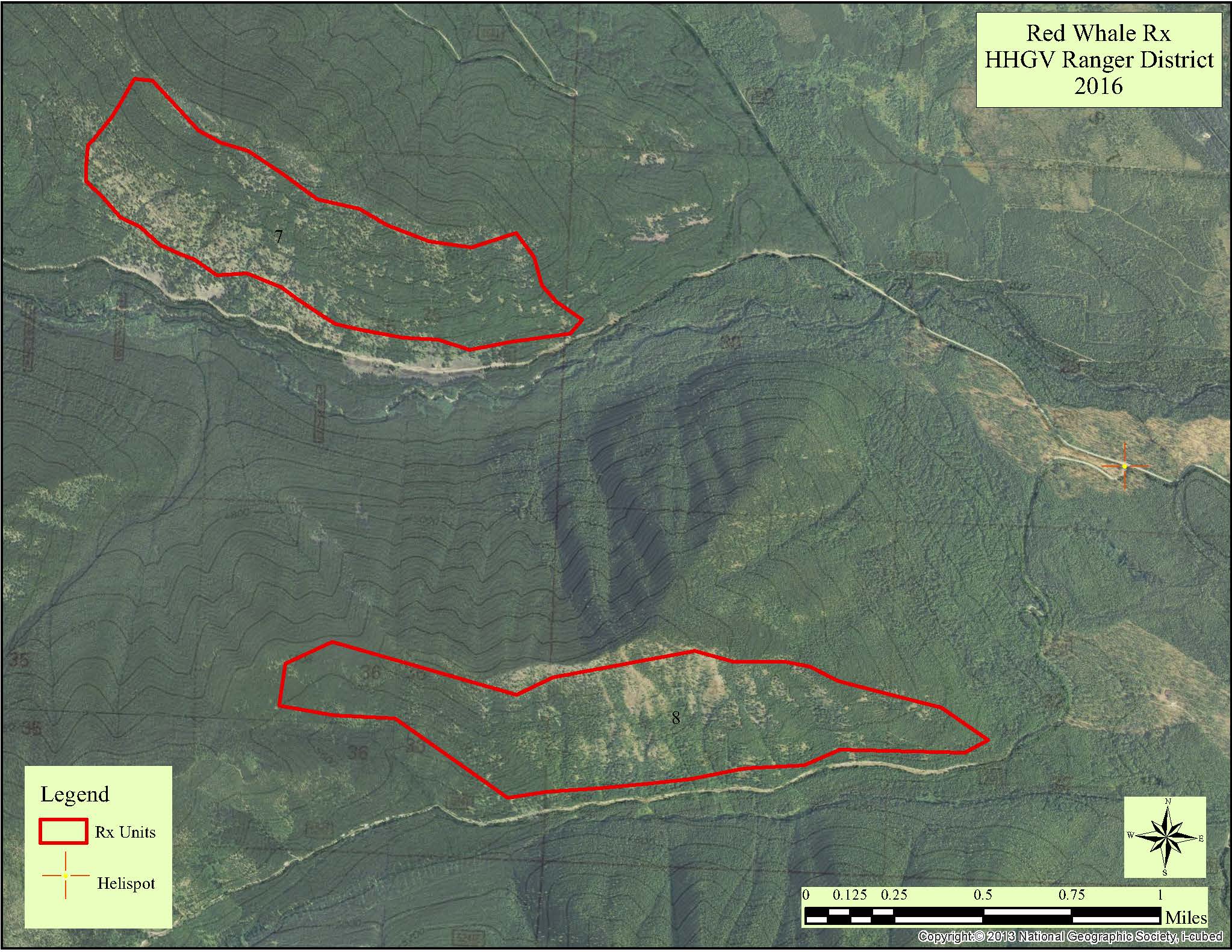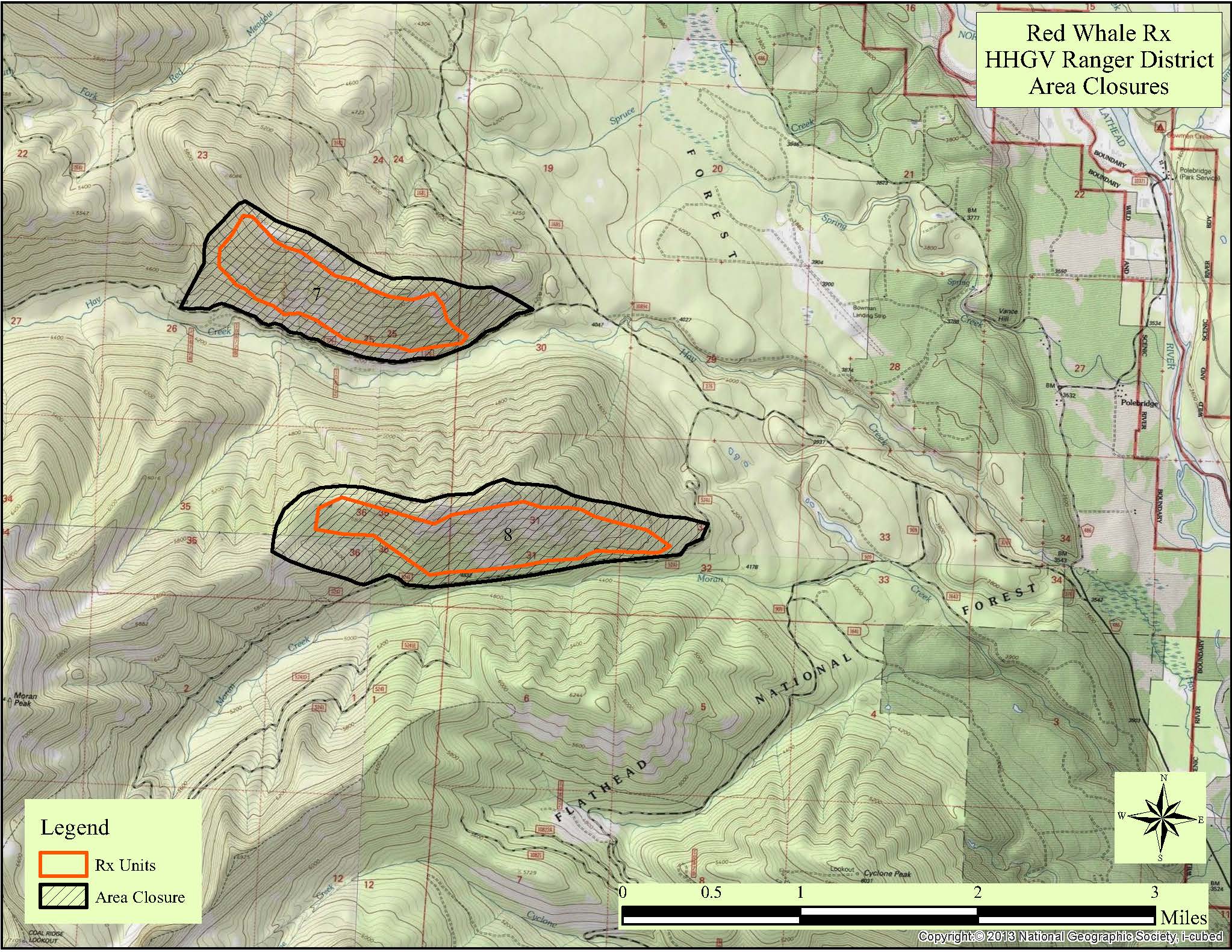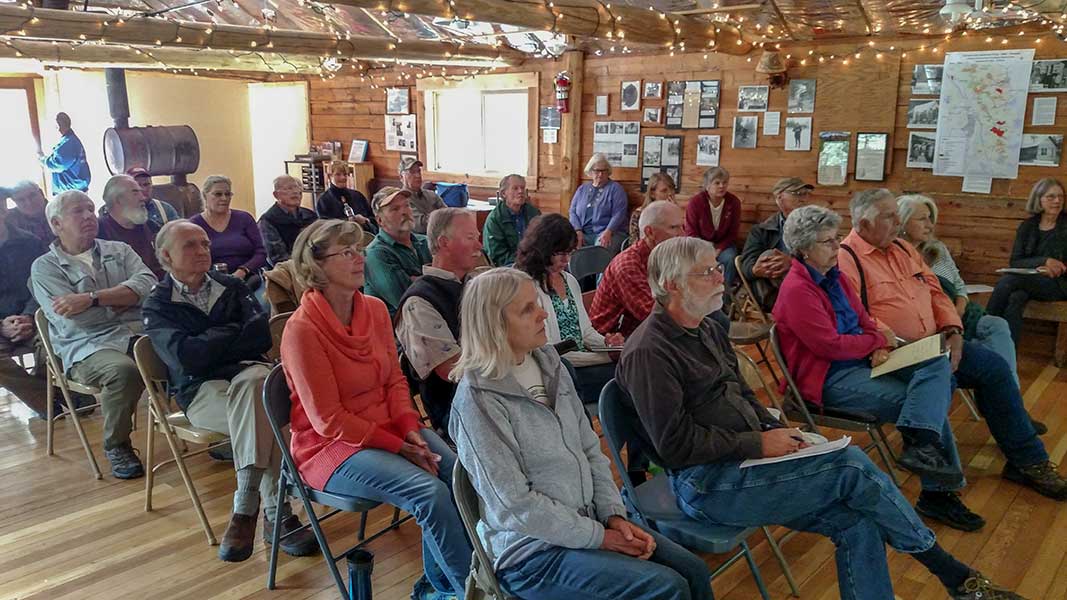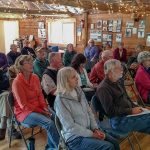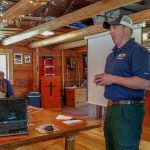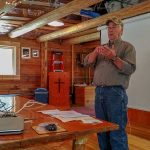The summary says… By mid-late July, the western fire season will begin to progress north into the Pacific Northwest and Northern Rockies. While a normal transition into fire season is expected in the lower elevations, a delayed entrance is possible in the higher elevations as both regions enter their fire seasons having seen abundant winter and spring precipitation and snowpack accumulation.
Category: Fire Mitigation
Fire Mitigation Committee Report, Late Winter 2017
The Fire Mitigation Committee is planning for the North Fork’s 2017 Firewise Day, which probably will be held the morning of July 19, preceding the Summer Interlocal. Byron Bonney will be our featured speaker. He has been instrumental in working with landowners on hazardous fuels treatments in the Bitterroot. We expect him to tell us about the effects of those treatments in the area burned by the Roaring Lion Fire last summer. Although many homes were destroyed in the fire, almost all of the homes whose owners had created defensible space around them were spared. The treatments brought fire to the ground and limited the fuels that could be ignited by flying embers. They also improved the chance of survival for neighbors’ homes downwind. So as you’ll hear at the workshop, the fire provided important corroboration of the value of defensible space.
We have at least $10,000 left in our 4th hazardous fuels grant, with about 55 acres already treated and 35 in process. So far, landowners and community members have provided over $80,000 in cash match and in-kind labor. Special thanks goes to Flathead County, which donated almost $8000 in equipment and labor for chipping the slash that resulted from our Trail Creek Project. The Fire Mitigation Committee probably will apply for a 5th grant if it has the opportunity.
The Flathead Economic Policy Center administers the grants and provides landowners and the committee with invaluable technical assistance. We’ve just learned that our friend Mason Richwine, a FEPC forester who has worked with many North Fork landowners, is retiring in order to concentrate on hunting and fishing. We wish him success. Bill Swope will continue to work with us.
Flathead County is launching another revision of its Community Wildfire Protection Plan. The Fire Mitigation Committee expects to update its North Fork Wildfire Mitigation and Planning Report in conjunction with the county’s revision. We’ll need community input in the process. We’ll also need to update maps of the significant public and private work that’s been done on the North Fork since the fires of 2003.
Finally, the DNRC is sponsoring a multi-media presentation on the Era of Mega-Fires in Kalispell this Spring. The presentation will be held on Tuesday April 25 from 6 – 8 p.m. at Flathead Valley Community College, Arts & Technology Room 139. We understand that the program is compelling.
Red Whale Prescribed Fire Information – Units 7 And 8
Andy Huntsberger, Fire Management Officer for the Forest Service, wrote with the following information… We plan on doing some Prescribed Fire implementation in the North Fork of the Flathead on 9/28 and 9/29/2016. Specifically Red Whale Units 7 (270 Acres) & Unit 8 (308 Acres) located directly west of Polebridge, MT. We plan on hand igniting the ridges and potentially utilizing Helicopter PSD ignition to burn the lower portions of the units.
Click here for an interactive map of the planned areas.
Please see the attached maps for the specific locations and area closure.
Firewise Day 2016
The NFLA’s Fire Mitigation Committee sponsored its annual Firewise workshop on July 13, 2016, preceding the Summer Interlocal meeting. About 45 people attended. Committee co-chair Allen Chrisman once again put together an outstanding program, with presentations from all of the federal, state and local agencies with wildfire responsibilities on the North Fork.
Angela Mallon and Erik Warrington represented the DNRC. According to Ms. Mallon, grant funding for fuels treatments by private landowners probably will continue. In order to assure that grant monies are well-spent, the DNRC recently decided to model and evaluate the effectiveness of treatments in different forest types in Montana.
In the past, the DNRC has recommended a uniform prescription for fuels treatments, calling for a minimum of 10’ between the crowns of trees. Based on its recent physics-based modeling, however, the DNRC now recommends that treatments be designed around site-specific attributes. Basically, except around homes, one size does not fit all. Landowner preferences are taken into consideration, too.
The DNRC continues to encourage at least 300’ of defensible space around homes. Ms. Mallon also emphasized the benefits of pruning trees to remove ladder fuels. Doing so encourages fire to drop to the ground, making firefighters’ job easier.
Smith Valley’s James Brower spoke on behalf of Flathead County, which has structure protection responsibilities on the North Fork. He commented that it takes a long time for a structure engine to reach the North Fork, so that it’s up to landowners to make their homes more defensible. He further commented that engines won’t enter overgrown driveways because of life safety concerns. If possible, the county prefers two means of ingress and egress from a property.
Mr. Brower added that woodsheds are structure firefighters’ nemesis. He suggested placing mesh over woodshed openings so embers can’t reach the firewood stored there. He also warned attendees not to stash firewood on decks or adjacent to structures.
Andy Huntsberger recently was named Fire Management Officer for the Flathead Forest’s Hungry Horse-Glacier View District. He told attendees that the Glacier Rim Fire in 2015 had brought home the potential for reburn on the North Fork. We were lucky last year because the North Fork did not get significant lightning. Almost 100,000 acres burned in the South Fork, however.
Mr. Huntsberger encouraged us to keep doing what we’re doing to protect our homes, as to make good decisions in the event of a fire. He stated that three lookouts will be staffed this summer, providing good coverage. He also mentioned that the Forest Service usually flies over the area the day after a lightning storm to check for any resultant fire starts.
Manny Mendoza, deputy FMO, commented that El Nino weather pattern appears to be breaking down. He said that fuel moistures were “pretty good” going into the mid-July to September fire season.
Bill Swope of the Flathead Economic Policy Council has worked with landowners for more than 10 years, implementing our hazardous fuels grant program. He estimated that they have probably spent $1 million in the North Fork since the fires of 2003.
Although about $18,000 is left in our fourth grant, the monies largely have been committed. We’ll probably apply for a fifth grant if the opportunity arises and will attempt to preserve our traditional cost-share ratio whereby the grant pays 75% of the cost of a project and the landowner pays 25%.
Mr. Swope remarked that grant monies may not cover the full cost of a job. For example, technical specifications may not provide for as much clean-up work as a landowner wants to have done. In that event, the landowner is responsible for the cost of any additional work.
In addition to live presentations, attendees saw a video by internationally known fire researcher Jack Cohen of the Missoula Fire Lab. Mr. Cohen stressed that it’s “the little things” that typically cause a house to burn during a wildfire. In particular, embers may land in fine fuels around a home, which in turn ignite it. Open gables may allow embers to enter; covering vents with mesh may prevent them from gaining access. He emphasized that landowners should address the little things before a fire starts rather than waiting until their homes are threatened by wildfire. In follow-up remarks, Allen Chrisman commented that it’s incumbent on North Fork landowners to “self-rescue.”
The Fire Mitigation Committee is grateful for the continuing support and collaboration of agencies with jurisdiction on the North Fork, including their participation in our Firewise Day workshop.
Firewise Day 2016
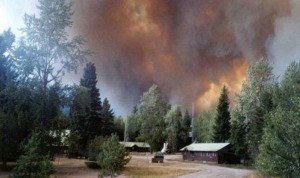 This year’s Firewire Day workshop will be held on Wednesday July 13, 2016 from 9:30 a.m. to noon at Sondreson Hall, immediately preceding the Summer Interlocal meeting.
This year’s Firewire Day workshop will be held on Wednesday July 13, 2016 from 9:30 a.m. to noon at Sondreson Hall, immediately preceding the Summer Interlocal meeting.
Our Firewise Day agenda includes the following items:
- A video by Jack Cohen, internationally known wildfire expert at the Fire Lab in Missoula. The video’s title is “Your Home Can Survive a Wildfire,” with advice about how to create defensible space around your home.
- A presentation by Angela Mallon and Lucas Wells of the DNRC. They will report on the preliminary results of their study on optimal spacing of trees in hazardous fuels reduction projects.
- A presentation by Lincoln Chute, Director of Emergency Services for Flathead County. Mr. Chute will explain the county’s “Ready, Set, Go” evacuation program. He may illustrate ingress/egress concerns with video footage from the Fort MacMurray fires.
- Remarks by Andy Huntsberger, Fire Management Officer for the Forest Service’s Glacier View/Hungry Horse District. He will review the fire season forecast and resources available on the North Fork this summer. He’ll also touch on the potential for reburn in areas burned since the Red Bench Fire in 1988.
- A review of the status of our hazardous fuels grants by Bill Swope and Carol Daly. They also will address opportunities for landowners.
- Tentatively, remarks by Christine Johnson, Executive Director of Firesafe Montana. She will tell us about the Firesafe program. The North Fork Landowners Association is a Firesafe member.
July National Wildland Fire Potential Outlook
Here is the latest National Wildfire Potential Outlook covering July, August and September: http://www.nifc.gov/nicc/predictive/outlooks/monthly_seasonal_outlook.pdf
So, we are expecting a “normal” fire season in Northwestern Montana, which will begin as early as mid-July and last through the end of September. Normal means that we will have a number of lightning fires, and fires that occur with good position with heavy fuels on active burning days will move significantly. If we get recurring moisture that keeps the live fuels moist it can reduce the severity of fires absent wind events. But we will see those effects diminish as shrubs cure out in September.
Fire Mitigation Committee Report, Late Spring 2016
From Co-Chairs Molly Shepherd and Allen Chrisman
Hazardous Fuels Grant
The North Fork has received four hazardous fuels reduction grants since the fires of 2003. Monies have been available on a cost-share basis, with the grant paying 75% of the cost of an eligible project and the landowner contributing the remaining 25%. The Flathead Economic Policy Center has administered the grants and provided invaluable technical assistance on our behalf. We have closed out our three earlier grants and have a balance of about $20,000 remaining on the fourth. A number of landowners have committed to or are considering projects.
Our priority with the fourth grant has been to reduce hazardous fuels along the lower part of Trail Creek Road, where it passes through private property. The purpose is to improve ingress and egress, allow safer access for firefighters, and afford an escape route over the Whitefish Divide. We’ve had a positive response from landowners. Flathead County is assisting us by chipping the slash generated by landowner treatments along the road.
The Fire Mitigation Committee tentatively expects to apply for a fifth grant when the opportunity arises. Committee members have discussed giving priority to ingress/egress projects along lower Red Meadow Road, similar to those funded along the lower stretch of Trail Creek Road. Flathead County also may support potential Red Meadow projects by chipping the resulting slash.
Information about participation in the grant program is available from Bill Swope, who may be reached at 406-250-9812 or at bhswope@gmail.com.
Firewise Day 2016
The North Fork has been recognized as a Firewise community for eleven years. One of the requirements for recognition is to contribute a minimum of $2 per capita toward Firewise activities. In 2015, we contributed about $8,200, most of it in volunteer time, with a landowner population approaching 500.
Another requirement for continuing recognition is to hold an annual Firewise Day event. The 2015 workshop featured an excellent program and strong attendance. This year’s workshop will be held on Wednesday July 13, 2016 from 9:30 a.m. to noon at Sondreson Hall, immediately preceding the Summer Interlocal meeting.
Our Firewise Day agenda includes the following items:
- A video by Jack Cohen, internationally known wildfire expert at the Fire Lab in Missoula. The video’s title is “Your Home Can Survive a Wildfire,” with advice about how to create defensible space around your home.
- A presentation by Angela Mallon and Lucas Wells of the DNRC. They will report on the preliminary results of their study on optimal spacing of trees in hazardous fuels reduction projects.
- A presentation by Lincoln Chute, Director of Emergency Services for Flathead County. Mr. Chute will explain the county’s “Ready, Set, Go” evacuation program. He may illustrate ingress/egress concerns with video footage from the Fort MacMurray fires.
- Remarks by Andy Huntsberger, Fire Management Officer for the Forest Service’s Glacier View/Hungry Horse District. He will review the fire season forecast and resources available on the North Fork this summer. He’ll also touch on the potential for reburn in areas burned since the Red Bench Fire in 1988.
- A review of the status of our hazardous fuels grants by Bill Swope and Carol Daly. They also will address opportunities for landowners.
- Tentatively, remarks by Christine Johnson, Executive Director of Firesafe Montana. She will tell us about the Firesafe program. The North Fork Landowners Association is a Firesafe member.
Here is the final agenda for Firewise Day.
Wildfire Mitigation and Planning Report
The Fire Mitigation Committee prepared a North Fork Wildfire Mitigation and Planning Report in 2005 and updated it in 2009. If you would like to see a copy of this report, please click here. The report is appended to Flathead County’s Community Wildfire Protection Plan (CWPP).
The county anticipates revising its CWPP within the next year or two. The Fire Mitigation Committee expects to revise the North Fork’s plan in conjunction with the county’s revision. We’ll update our demographic information, grant history and achievements. We’ll also generate new maps of public and private fuels mitigation work. Public participation is required in the CWPP process.
Burn Permits Are Required
Burn Permits are Required May 1- June 30. Permits are only required in May and June and they are FREE! Call Flathead County Air Quality at 751-8144 or click here for today’s ventilation forecast. Click here to apply for a permit.
If you have additional questions or would like information regarding survivable space guidelines, wildfire preparedness, or home assessments please call the Fire Prevention Specialist for the Kalispell Unit of the DNRC at 751-2270. For more information, see the DNRC’s website.
May 1 Wildland Fire Outlook
October 1 National Fire Potential Outlook
Attached is the October 1 National Fire Potential Outlook: http://www.nifc.gov/nicc/predictive/outlooks/monthly_seasonal_outlook.pdf.
While it states that the fire season is over in the Northern Rockies:
Northern Rockies: Significant wildland fire potential will be normal for the outlook period October, November, and December 2015 through January 2016.
Wet storms in early September greatly reduced fire potential with most indices across the geographic area near normal conditions. Some increases occurred with the warm and dry conditions over southeastern and south central Montana but shorter days and cooler nights will keep fuel moisture rising into the fall. Some evidence of drought stress in live vegetation across the western half of the area will likely be a factor for the 2016 fire season. El Niño conditions deep into the winter suggest poor snow conditions and continuation of drought across the area.
Fire season for 2015 is essentially over for the Northern Rockies. However, significant wind events during the fall-to-winter transition could produce brief fire concerns in the fine fuels east of the continental divide until snow falls. This will likely be delayed given the forecast of El Niño conditions.
